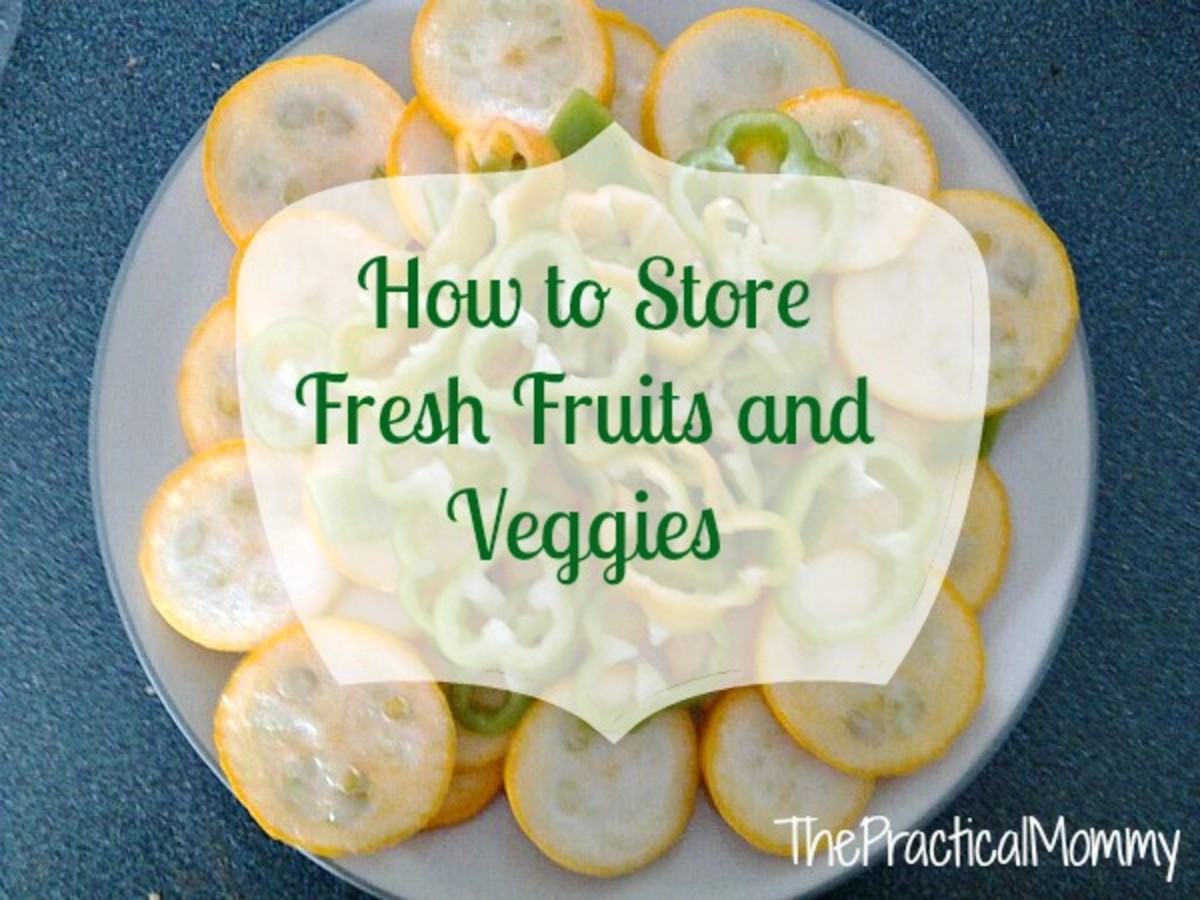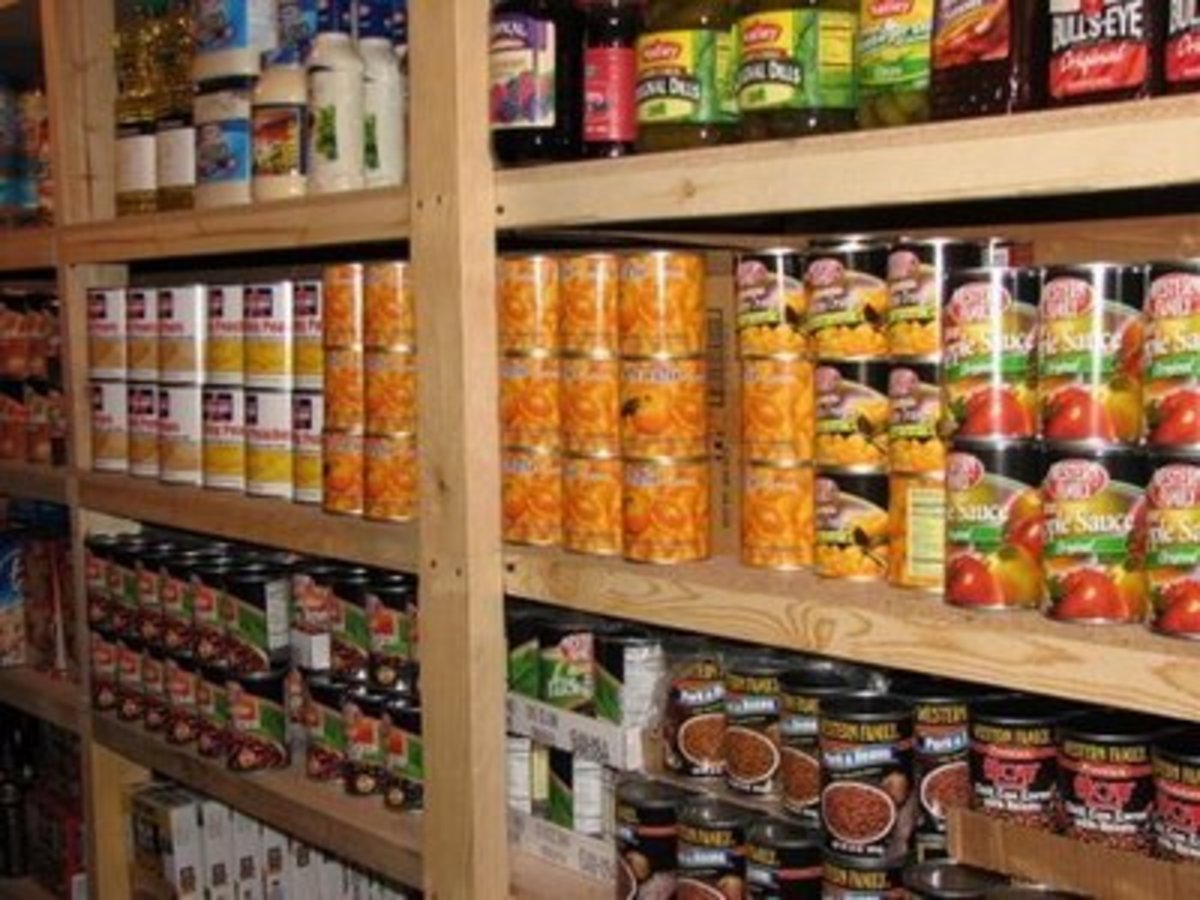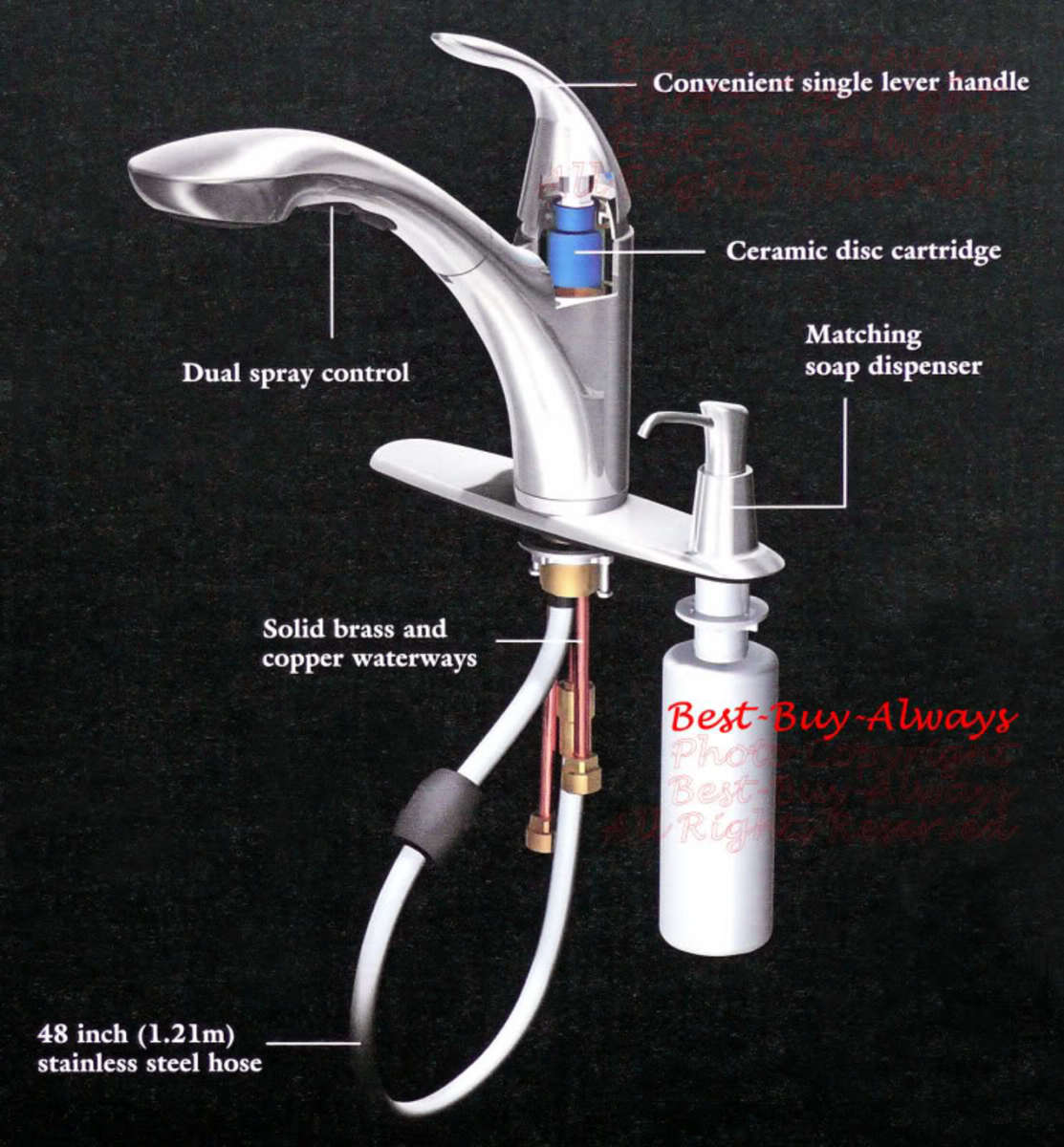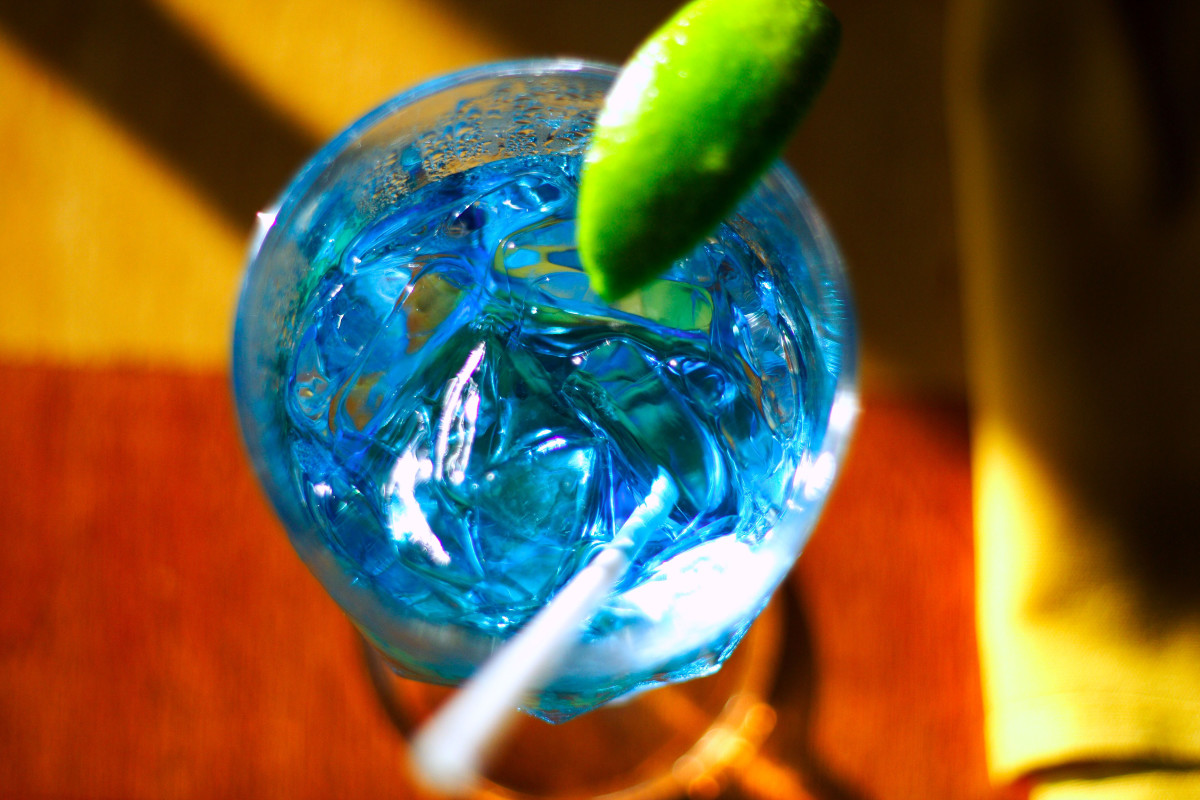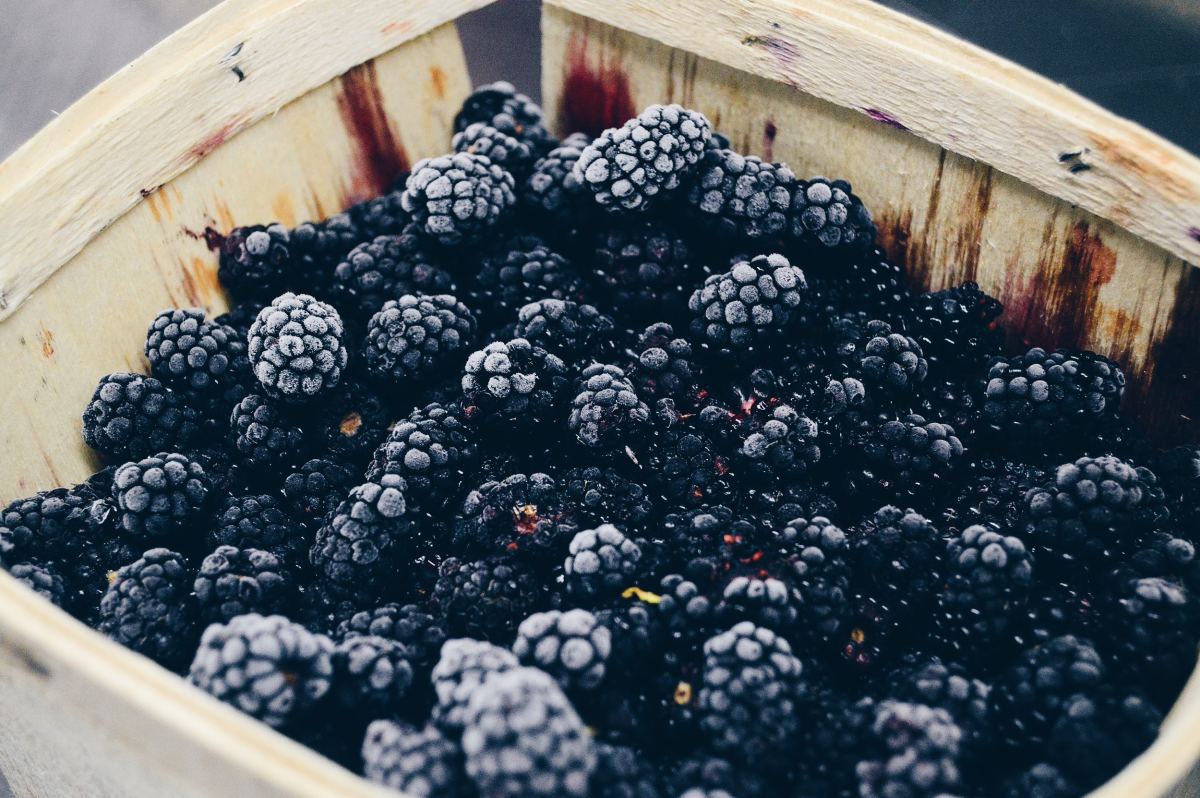Proper Food Handling and Kitchen Sanitizing Tips
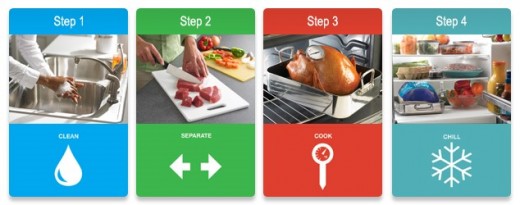
Proper food handling and kitchen sanitizing should be used everyday in your household. This time of year, with the holidays fast approaching, it is especially important to handle food and your kitchen area with care. This is the time of year when holiday parties are happening and many people are gathering so it is even more important to make sure everyone is safe and healthy during this magical time.
Proper food handling starts at the grocery store when you shop for your food. You should always make a shopping list before you go so you know exactly what you're looking for. Your shopping list should have different categories like dairy, fruits, vegetables, dry food, and cleaning supplies or whatever else you might need. It is important to list foods in the same category together so that you don't waste time going from one area in the store to another. It is also important to start your grocery shopping with dry foods like pasta, rice, canned goods, and other foods that don't need refrigeration. Next, get your cleaning supplies or other items like toilet paper, toothpaste, or shampoo. Then move on to your fruits and vegetables. Now you are ready to get your frozen items like pizza, ice cream, and frozen dinners. Last, you should get your refrigerated items like milk, cheese, eggs, meat, chicken, and whatever else you might need. Always place your meat and chicken in plastic bags so they don't leak all over your other food. This is important to remember because frozen foods stay cold much longer then refrigerated foods. You should always get the foods last that spoil the fastest.
You should also organize your shopping cart by the order you get your food. Dry foods in one area, frozen in another, refrigerated here, and chemicals as far away from the food as possible. Put your items on the moving belt in the checkout line in the same order so that they are bagged accordingly. You will be much happier when you know all your cold and frozen foods are bagged together. If it is warm outside, you have a few stops to make, or you have a long way to get home, remember to bring your cooler and buy a bag of ice at the store. You can store your frozen and cold items in the cooler to make sure they stay fresh and your ice cream doesn't melt.
Your food handling journey continues when you come home. This might seem counter intuitive since you are dealing with food, but don't put your grocery bags on the table you eat at or the kitchen counters. Your grocery bags have been in very dirty places like the shopping cart and in the backseat, floor, or trunk of your car. These are the places that don't get cleaned very often if you know what I mean. Just place your grocery bags on the floor, you are not harming your food because it is safely in the bags and not actually touching the floor. Start by putting your refrigerated and frozen items away first. If they belong in the refrigerator or freezer that is where they need to be as soon as possible. I also keep fruits and vegetables in the refrigerator at home so they are not affected by the heat in the winter and the air conditioner in the summer. I keep bread in the refrigerator as well so it keeps fresh longer. If it's sandwich bread I usually toast it or heat it up before eating so that it tastes better.
Your kitchen is an important place in your home. It is where all your food is prepared and eaten. The kitchen needs to be very clean, no excuses. The kitchen counters need to be wiped down with antibacterial wipes daily. I don't use dish rags because these harbor bacteria and don't get washed often so by using them you are actually making things more dirty then they were to begin with. It is much easier to use antibacterial wipes that you can use once and then throw away. I use antibacterial wipes for kitchen counters, kitchen facets, and sink. I also use them to clean the place mats and tablecloths if they are vinyl.
Next, are the sponges in the kitchen. You need to have specific sponges for each task you are doing if you want to keep a safe and healthy food environment. For example, use a sponge just for washing dishes. Simple right? Then use one sponge specifically for cleaning your kitchen sink. I usually use the same dishwashing liquid to clean the kitchen sink for a quick cleaning. If I want to be more thorough, I use Ajax for the kitchen sink. Next, if you are preparing raw meats in your kitchen, please use a separate sponge to clean all utensils that touched the raw meat and its juices. It is also advisable to put the sponge you use the most in the microwave at least once a week. Sponges are usually wet and moisture can cause the breeding of bacteria. Just put it in the microwave at least once a week for a minute on high to dry it and stop the breeding of bacteria. I also try to replace the dish washing sponge once a month. I use a rotation system in which I get a new sponge for washing dishes and use the old dish washing sponge to now clean the sinks. Don't forget to clean your dish rack where your dishes dry. Try to make it a habit to clean it at least once a month. Usually the water from the dishes dries up on the bottom even if you empty it everyday.
The most important part of food handling is how you handle the food itself. Always remember to wash your hands before you start preparing food. For holiday parties, it is a common mistake to leave refrigerated items like meat and cheese trays just sitting around for hours. This is not only wrong, it is also very unsafe. Cold cut trays need to be refrigerated which means that you need to keep them on ice when they aren't in the refrigerator. Nobody likes warm cheese and meat so make it a habit to either keep them on ice or buy two and rotate them. Leave one out for half an hour for the guests, then put it back in the fridge and take the other one out for consumption. This goes for all cold foods like salads, especially ones that have mayo that spoils very quickly. If you don't want the hassle of rotating food in and out of the refrigerator all night, just get some type of cooling system or keep your cold foods on ice for the guests.
You also need to keep in mind that hot foods need to stay hot. This means that casserole you made in the oven has to be keep warm and not stay at room temperature for hours. This isn't safe for anyone who chooses to consume it. There are many devices you can buy that keep hot foods hot that you can use at your holiday parties. They might be a little pricey, but that is a price that is worth paying for the safety of your guests. These devices are similar to how they keep foods hot at buffets, only you will be using it for a few hours rather than the whole day. If you are just having a regular sit-down dinner with your family, remember to set the table with food right before everyone sits down to eat. Don't do it an hour before so everything gets cold or warm.
As a general rule, food usually starts to spoil after an hour mark at room temperature. So if you just took out that potato salad, it is safe to keep on the table for about an hour before it starts to get questionable. You also have to take into consideration the environment that you are eating in. For this time of year, you most likely have the heat cranked up in your home, probably at 70 degrees or more, so it is much like eating outdoors on a warm day. The hour rule still applies though the exception is ice cream or cake. Ice cream won't last an hour in any temperature besides the freezer so only take as much as you need and put it back. Cake is also a tricky food that needs to stay in the refrigerator. Don't let it sit out and spoil.
It is important to remember that food usually spoils and causes sickness due to mistakes that people make in handling it. Remember that what needs to stay cold should be cold and what is hot should be kept hot unless you are cooling it down to refrigerate or freeze it. This brings me to the next point: make sure hot food properly cools down before you refrigerate or freeze it. If you are making lasagna but don't plan on eating it right away, make sure you cool it for 30 to 45 minutes before putting it in the refrigerator or freezer. Putting piping hot foods in the refrigerator isn't wise for your food or your refrigerator which could malfunction from such abuse.
Washing fruits and vegetables is another practice you need to incorporate into your food handling routine. You have no idea how many hands have touched the fruit or vegetable before you and that is scary. This starts from the people who picked them, then shipped them, then put them on display at the store. Then the cashier handles your fruits and vegetables and they touch everything including money. You may think your fruits and vegetables are safe because you packed them in a plastic bag, but still you don't know who touched them before this happened. Just wash your fruits and vegetables, first in warm water and then in cool water before you prepare to cook or eat them.
One habit you must get rid of in the kitchen is defrosting meat or chicken by leaving it on the kitchen counter overnight. This isn't safe or sanitary. A better way to defrost is by moving the meat or chicken from the freezer to the meat drawer or lower shelf in your refrigerator a day or two before you will be cooking it. If you don't have a meat drawer, get a plastic container and put your meat in that in case it leaks while it defrosts. Don't use the container's lid. Don't remove the meat from its packaging, just keep it in the store tray. If you don't have a plastic container for defrosting, just keep it in the plastic bag you used when you purchased it at the grocery store.
I don't believe in the five second rule. If I drop some food on the floor there is no way I am going to pick it up and put in my mouth. This is especially true if you don't take your shoes off when you enter your home. That means your kitchen floors have the same germs that sidewalks do and everywhere else you walk. Would you eat something you dropped on the street? I'm guessing not. Even if you fall into the habit of taking off the shoes when you get home category, don't eat food off the floor and teach children the same. Just don't do it.
Now that you are a little more knowledgeable in your food handling and kitchen sanitizing procedures, you will hopefully have a safer and happier holiday season and the rest of the new year!
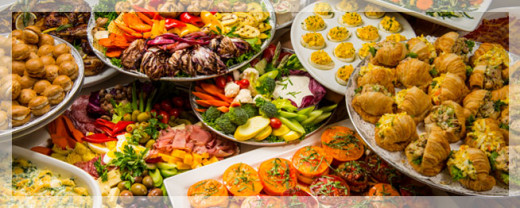
© 2014 GreenEyes1607


